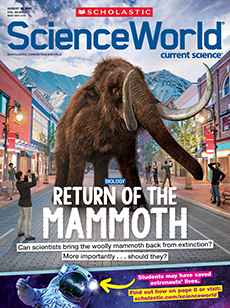Three race cars line up at the top of a hill in Akron, Ohio. Behind the wheel of each car is a kid who helped build the vehicle. The starting barriers drop, releasing the cars. They begin to roll down a 301.5 meter (989 foot)-long track. Spectators cheer as the cars gain speed, some reaching 50 kilometers (30 miles) per hour. The first racer to zoom across the finish line is crowned the winner of the All-American Soap Box Derby World Championship Race!
Every July, hundreds of young people ages 7 to 20 travel to Akron to participate in the Soap Box Derby. The 90-year-old race gets its name from the wooden soap boxes that kids once used to create homemade race cars. Today’s Derby cars are much more sophisticated. But they’re still powered in the same way: using only the force of gravity.
Just before the race begins, the cars have a lot of stored potential energy because of their position at the top of the hill. As gravity pulls the racers downhill, this stored potential energy turns into kinetic energy—the energy of motion. Drivers lean forward to make their vehicles more aerodynamic. With their head positioned lower, air can more easily flow around the car. This minimizes air resistance, or drag. Drivers also aim for a straight run down the course to reduce friction from the wheels rubbing against the track. “Too much turning causes energy loss and a slower time,” says Dave Hubbell, an engineer who volunteers with the race.
Who will become next year’s world champion? It will likely be the driver who is best at using physics to their advantage.
Three race cars line up at the top of a hill in Akron, Ohio. A kid is behind the wheel of each car. These drivers helped build their vehicles. The starting barriers drop, and the cars are released. They roll down a 301.5 meter (989 foot)-long track. As the cars gain speed, the crowd cheers. Some cars reach 50 kilometers (30 miles) per hour. One racer zooms across the finish line first. This is the winner of the All-American Soap Box Derby World Championship Race!
Every July, hundreds of young people travel to Akron to race in the Soap Box Derby. The racers are ages 7 to 20. Long ago, kids used wooden soap boxes to create homemade race cars. That’s where the 90-year-old race gets its name. Today’s Derby cars are much more advanced. But they’re still powered in the same way. They use only the force of gravity.
Just before the race begins, the cars are sitting at the top of the hill. That position gives them a lot of stored potential energy. Then gravity pulls the racers downhill. The stored potential energy turns into kinetic energy—the energy of motion. Drivers lean forward to make their vehicles more aerodynamic. Their heads are lower, so air can flow around the car more easily. This lessens air resistance, or drag. Drivers also aim for a straight run down the course. That reduces friction from the wheels rubbing against the track. “Too much turning causes energy loss and a slower time,” says Dave Hubbell. He’s an engineer who volunteers with the race.
Who will become next year’s world champion? Probably the driver who is best at using physics to succeed.

